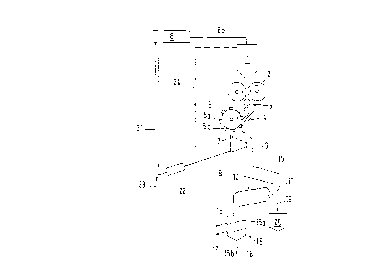Some of the information on this Web page has been provided by external sources. The Government of Canada is not responsible for the accuracy, reliability or currency of the information supplied by external sources. Users wishing to rely upon this information should consult directly with the source of the information. Content provided by external sources is not subject to official languages, privacy and accessibility requirements.
Any discrepancies in the text and image of the Claims and Abstract are due to differing posting times. Text of the Claims and Abstract are posted:
| (12) Patent: | (11) CA 2238383 |
|---|---|
| (54) English Title: | PROCESS OF HOT BRIQUETTING GRANULAR SPONGE IRON |
| (54) French Title: | PROCEDE DE BRIQUETAGE A CHAUD D'EPONGE DE FER GRANULEUSE |
| Status: | Expired and beyond the Period of Reversal |
| (51) International Patent Classification (IPC): |
|
|---|---|
| (72) Inventors : |
|
| (73) Owners : |
|
| (71) Applicants : |
|
| (74) Agent: | ROBIC AGENCE PI S.E.C./ROBIC IP AGENCY LP |
| (74) Associate agent: | |
| (45) Issued: | 2004-05-18 |
| (86) PCT Filing Date: | 1996-12-05 |
| (87) Open to Public Inspection: | 1997-06-19 |
| Examination requested: | 2001-08-06 |
| Availability of licence: | N/A |
| Dedicated to the Public: | N/A |
| (25) Language of filing: | English |
| Patent Cooperation Treaty (PCT): | Yes |
|---|---|
| (86) PCT Filing Number: | PCT/EP1996/005446 |
| (87) International Publication Number: | WO 1997021840 |
| (85) National Entry: | 1998-06-05 |
| (30) Application Priority Data: | ||||||
|---|---|---|---|---|---|---|
|
The granular sponge iron is fed into a roller press at temperatures
of 600-850 °C to form hat briquets. A strip structure is thereby
formed from sponge iron with ausformed hot briquets separated from
one another by gaps. The strip structure is smashed to isolate the
hot briquets, during this operation fragments of strip structure are
produced. The hot briquets and at least some of the fragments
are cooled to between 20 and 400 °C and the cooled briquets and
fragments are led through a revolving drum. Inside the latter, fine-grained
abrasion material is produced from the briquets and fragments.
This is then separated from the briquets and fragments since it is
pyrophorous.
L'éponge de fer granuleuse est alimentée dans une presse à rouleaux à des températures comprises entre 600 et 850 DEG C pour former des briquettes chaudes. On produit une structure en forme de bande en éponge de fer avec des briquettes chaudes ausformées, placées à une certaine distance les unes des autres. En fracassant la structure en forme de bande, on sépare les briquettes chaudes les unes des autres en produisant des fragments de ladite structure. Les briquettes chaudes et au moins une partie des fragments sont refroidies à des températures comprises entre 20 et 400 DEG C puis, une fois refroidies, elles sont acheminées vers un tambour rotatif dans lequel les briquettes et fragments produisent des particules abrasées à fine granulométrie. Ces particules abrasées sont finalement séparées des briquettes et des fragments car elles sont pyrophores.
Note: Claims are shown in the official language in which they were submitted.
Note: Descriptions are shown in the official language in which they were submitted.

2024-08-01:As part of the Next Generation Patents (NGP) transition, the Canadian Patents Database (CPD) now contains a more detailed Event History, which replicates the Event Log of our new back-office solution.
Please note that "Inactive:" events refers to events no longer in use in our new back-office solution.
For a clearer understanding of the status of the application/patent presented on this page, the site Disclaimer , as well as the definitions for Patent , Event History , Maintenance Fee and Payment History should be consulted.
| Description | Date |
|---|---|
| Time Limit for Reversal Expired | 2015-12-07 |
| Letter Sent | 2014-12-05 |
| Inactive: Correspondence - MF | 2010-08-10 |
| Inactive: Correspondence - MF | 2010-08-10 |
| Inactive: IPC from MCD | 2006-03-12 |
| Grant by Issuance | 2004-05-18 |
| Inactive: Cover page published | 2004-05-17 |
| Pre-grant | 2004-03-04 |
| Inactive: Final fee received | 2004-03-04 |
| Notice of Allowance is Issued | 2003-09-25 |
| Letter Sent | 2003-09-25 |
| Notice of Allowance is Issued | 2003-09-25 |
| Inactive: Approved for allowance (AFA) | 2003-09-12 |
| Letter Sent | 2001-09-07 |
| Request for Examination Requirements Determined Compliant | 2001-08-06 |
| All Requirements for Examination Determined Compliant | 2001-08-06 |
| Request for Examination Received | 2001-08-06 |
| Inactive: Single transfer | 1998-10-14 |
| Inactive: Correspondence - Formalities | 1998-10-14 |
| Inactive: IPC assigned | 1998-08-18 |
| Inactive: First IPC assigned | 1998-08-18 |
| Classification Modified | 1998-08-18 |
| Inactive: Courtesy letter - Evidence | 1998-08-04 |
| Inactive: Notice - National entry - No RFE | 1998-08-04 |
| Application Received - PCT | 1998-08-03 |
| Application Published (Open to Public Inspection) | 1997-06-19 |
There is no abandonment history.
The last payment was received on 2003-11-14
Note : If the full payment has not been received on or before the date indicated, a further fee may be required which may be one of the following
Please refer to the CIPO Patent Fees web page to see all current fee amounts.
Note: Records showing the ownership history in alphabetical order.
| Current Owners on Record |
|---|
| METALLGESELLSCHAFT AKTIENGESELLSCHAFT |
| Past Owners on Record |
|---|
| HELMUT HAUSMANN |
| JOCHEN FREYTAG |
| MARTIN HIRSCH |
| MICHAEL STRODER |
| PETER WEBER |
| SIEGFRIED SCHIMO |